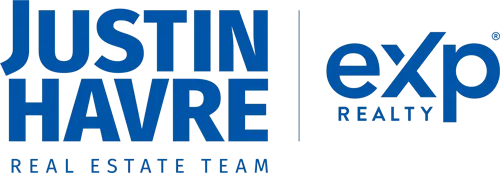How to Choose a Profitable Investment Property
Posted by Justin Havre on Wednesday, August 18th, 2021 at 9:10am.
 There are many online real estate platforms where you can find properties for sale. However, these platforms aren’t enough. You must ensure you’re putting your hard-earned money into the right property.
There are many online real estate platforms where you can find properties for sale. However, these platforms aren’t enough. You must ensure you’re putting your hard-earned money into the right property.
When investing as a buyer, you need to make sure the property will be profitable. One that generates enough rental income to settle the property expenses and leave you with a handsome gain. While going through hundreds of property listings, identifying the profitable one can be gruelling, but you don’t have to lose your sleep over this process.
We’ve created this essential guide to help you identify a profitable investment property so you can succeed in your investing journey. Keep reading to find out how to spot lucrative investment opportunities.
For informational purposes only. Always consult with a licensed real estate professional before proceeding with any real estate transaction.
Invest in a Profitable Market
Don’t invest in a property if you haven’t considered the location. Location is regarded as the most crucial factor in real estate investing. You can make more profit in some locations than in others. After all, you can change most things about your property, such as the features and amenities, but you can’t change its location.
While the national real estate market may give you a general outlook of the industry’s performance, it’s essential to carry out a detailed real estate market analysis of the area you are considering for your investment to get a local insight.
Let’s break down some of the critical factors to keep in mind when choosing the right location for your investment property:
Neighbourhood
The neighbourhood you invest in is vital since it determines your occupancy rates and the type of tenants that will be attracted to your property. In addition, your neighbourhood also influences the maximum and minimum rental rates you can charge.
For example, if your neighbourhood is within a college town, most of your tenants will likely be students. Similarly, your rental rates have to be student-friendly. When it comes to the vacancy rates, finding tenants during the summer break when students aren’t in sessions will be hard.
It’s important to carry out a neighbourhood analysis before investing in real estate. Find out as much as possible about the area to avoid surprises.
Also, some neighbourhoods aren’t favourable for rental property investors since they impose high permit fees and unreasonable rules and regulations.
Property Taxes
Every local authority has laws and regulations to govern rental properties. Property taxes can vary widely depending on the area you’re investing in. You must find out how much you’ll pay for property taxes each year.
Keep in mind that high property taxes aren't always a negative thing. If the rental income is high enough to make up for the property expenses, you can invest. Some neighbourhoods are quality enough to justify high property taxes.
Be sure that you visit your municipal authority when conducting your rental market analysis to be sure about all the taxes you’ll have to pay. Also, talk to a real estate attorney or accountant for advice on staying tax compliant. This will also help you know whether the taxes are set to increase soon.
Talking to other homeowners within the neighbourhood is also essential since it’ll give you a feel of what it’s like to pay taxes in the area.
Schools
If you plan to invest in single-family or multi-family homes, some of your tenants will likely have children. As such, you must consider the distance from local schools. Many investors fail to realize that the local school district also affects their property’s value. Proximity to schools will also help ensure a smoother selling process.Calculate the Potential Return on Investment
Once you’ve looked at the market-level rental data, it’s time to analyze the investment property itself. While looking at rental comps data can help you estimate the potential return on investment, computing the ROI metrics will help determine whether the real estate investment property makes financial sense.
Here are some essential metrics for you to calculate when carrying out a comprehensive investment property analysis:
Cash Flow
Cash flow refers to the amount left after sorting out expenses. It’s the difference between rental income and rental expenses. Savvy real estate investors know that investing in a property that offers positive cash flow is the best way to make money in real estate.
Conducting a cash flow analysis helps you invest only in profitable properties. You don’t want to have to pay for property expenses from your pocket.
Net Operating Income (NOI)
A property’s NOI is the income it generates once you deduct the operating expenses. While this metric may not entirely give you an insight into the property’s profitability, it’s a foundation for other calculations you’ll compute as you proceed with your investment property analysis. It’s calculated by adding the rental income plus any other income and subtracting the operating expenses.
While the rental income may make up most of the income, don’t forget to add revenue from other sources such as parking fees or laundry charges. The operating expenses include repairs, utilities, and other maintenance fees. Don’t factor in your mortgage fees since NOI doesn’t account for debt service.
Cash on Cash Return
Cash on cash return is an important metric to calculate the return on investment when taking a mortgage to finance your investment. It is the annual cash flow ratio before taxes to the total cash investment.
The cash flow before taxes is the property’s NOI minus the mortgage payments. The total cash investment includes the down payment, rehab costs, closing fees, and financing fees.
Cap Rate
The capitalization rate (cap rate) metric calculates the return on investment, assuming the investment property is bought in cash. You can calculate the cap rate by dividing the property’s net operating income (NOI) by its market value or purchase price.
This metric is mainly used to compare a house under investigation to other similar investment properties for sale in the same neighbourhood since it doesn’t account for the financing method. A reasonable cap rate varies depending on property type and location factors. However, you should strive for a cap rate between 8% and 12%. Even though the cap rate measures return on investment, try not to go much above 12%, which means your risk is also significant.
Build Wealth With Well-Informed Investments
Investing in real estate, especially as a first-timer, can be intimidating. However, knowing how to choose a suitable investment property can make the searching and buying process more straightforward—knowing what key things to look for can help you invest in a lucrative investment property for high rental income and high ROI.
Ensure you invest in the right location by conducting a neighbourhood analysis and checking the property taxes. Once you’re done with the market research, you can start the property analysis. Maximize the investment property’s potential return on investment by computing the cash flow, cash on cash return, and cap rate metrics.
For informational purposes only. Always consult with a licensed real estate professional before proceeding with any real estate transaction.
